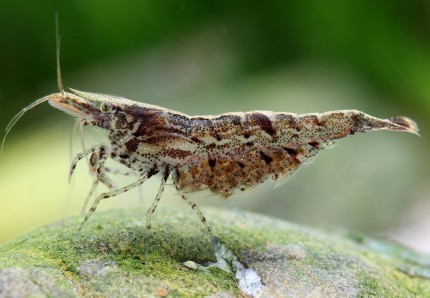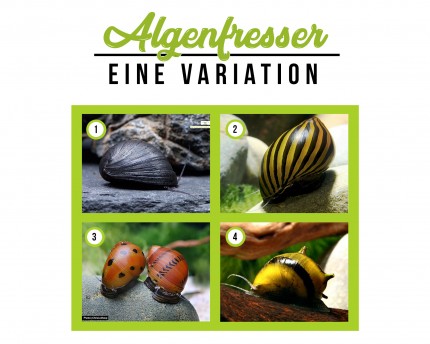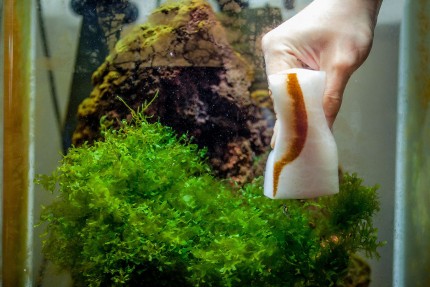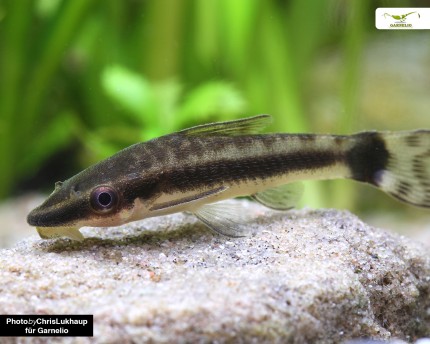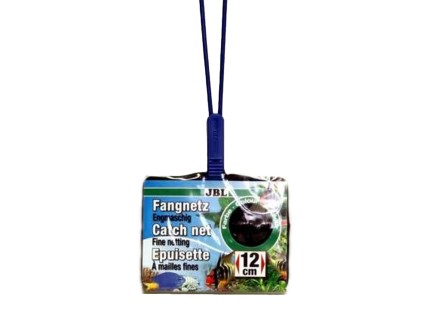Successfully combat brush algae and other red algae!
Brush algae and other red algae
They get their name from their color - at first glance, however, very few red algae really look red. They can be black, brown, reddish brown, greenish gray or even brownish green. However, if you put them in high-proof alcohol for some time, they turn bright red. This makes the diagnosis very easy.
Red algae are well known from sea water, but also in fresh water there are about 150 to 200 known species, which can make life in the aquarium quite difficult. The most common red algae in aquariums are brush algae from the genera Rhodochorton and Audouinella, and beard algae from the genus Compsopogon. Crustose red algae from the genus Hildenbrandia can also be found in the aquarium from time to time.
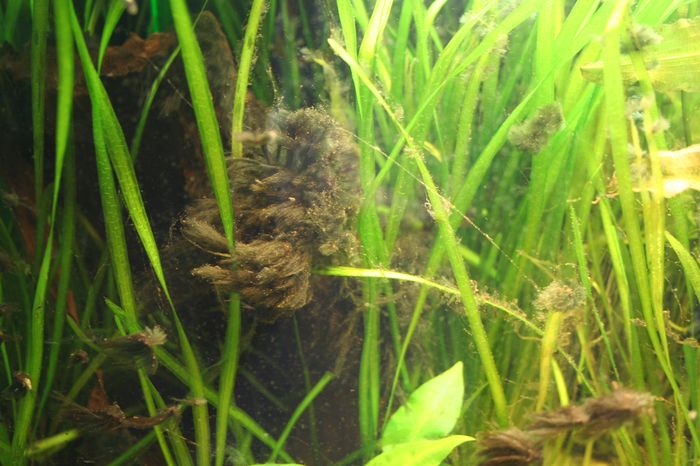
Brush algae
The brown, black, reddish-brown or dark gray-green brush algae are relatively short and grow quite slowly. Some species can be mistaken for short dark colored green algae at first sight. However, the alcohol test mentioned above quickly provides clarity here: while green algae do not change color after a short time in alcohol, red algae turn bright red after just a few hours. Most brush algae grow from a base plate in tufts about one to two centimeters upwards (depending on the species, the tufts can also be longer or shorter). Brush algae prefer to settle, for example, on the leaf edges of old leaves of plants with hard foliage such as Anubias or Echinodorus, where they can severely damage the leaf structure. However, brush algae can also be found on the substrate, the back wall and on decorative objects such as stones and wood. On stones or wood and on the back wall, brush algae can even look quite pretty, as long as they don't take over the entire aquarium.
Bearded algae
Bearded algae, on the other hand, grow up to 10 cm long, depending on the species. Bearded algae also have individual algae threads growing out of a base in tufts. Bearded algae prefer a higher current, therefore they are often found near the filter outlet, but also on older leaves of large-leaved plants with relatively firm foliage as well as on decoration and sometimes even simply on the substrate.
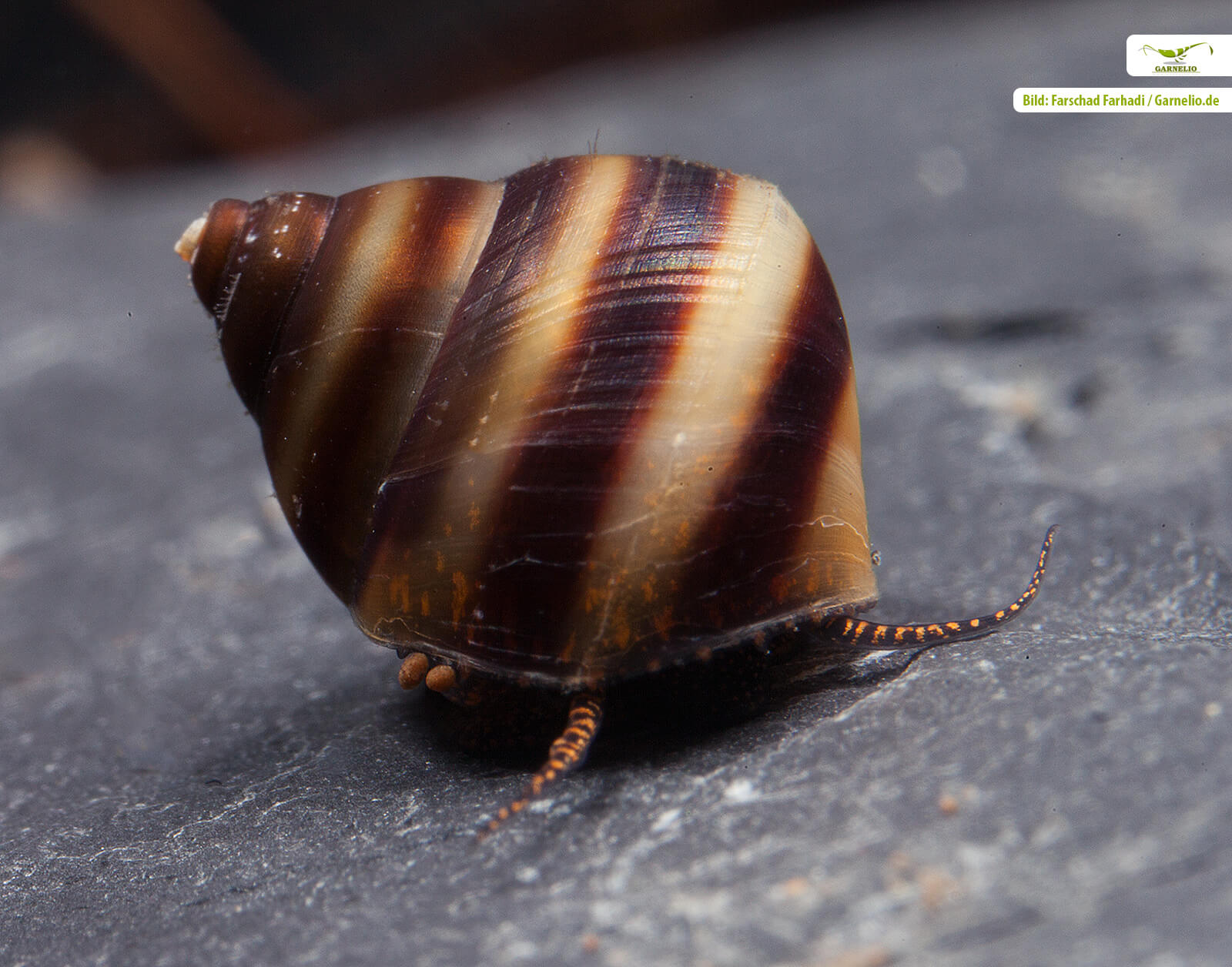
Piano snails love to eat brush algae!
Crusty red algae
This very slow growing red algae forms extremely flat crusts on rocks or even on the aquarium glass. They are bright red, and depending on the environment, the algae patches can even create quite a pretty effect that looks very natural and makes the rocks look less sterile, almost like lichens in nature.
Control - mechanical
The extremely tightly adhering base from which the filaments of red algae grow makes simple removal by plucking very difficult. In most cases, not all of the base cells are caught, and the algae threads simply grow back. Therefore, it is recommended to remove infested and already damaged leaves of plants along with the algae attached to them. Infested decorative objects should be removed from the aquarium and scrubbed off properly. Natural materials such as stones or wood can be scalded with boiling water to remove any residue still adhering to them.
Control - with CO2
Basically, red algae in the aquarium prefer rather hard water and a high pH value, which at the same time indicates a CO2 deficiency. Red algae perfectly master biogenic decalcification to supply them with CO2, so they still grow wonderfully when other higher plants have long since stopped growing due to CO2 deficiency. In this way, red algae make use of surplus nutrients that can no longer be used by other plants due to the low CO2 content of the water. During biogenic decalcification, the alga splits off CO2 from the calcium hydrogen carbonate (Ca(HCO3)2) dissolved in the water, and calcium carbonate (lime, CaCO3) precipitates in the process. The red alga incorporates this lime into its skeleton. This makes it very solid, which tends to deter predators.
In fact, there are not many fish that like to eat red algae in freshwater aquariums, except for e.g. the snout barb - Crossocheilus siamensis & ear lattice catfish. The situation is somewhat different with invertebrates: the piano snail, for example, is reported to be quite fond of eating brush algae and beard algae.
If you now increase the CO2 content in the aquarium by a targeted supply of CO2 with the help of a fertilizer system, you take away the advantage of the brush algae and bearded algae - the plants start to grow again and enter into nutrient competition with the algae. We recommend a CO2 level of 20 mg/l, which should be monitored with a CO2 continuous test. Adjusted fertilization and good light support the plants. A pleasant side effect: If the brush algae and beard algae no longer obtain their CO2 by biogenic decalcification, they incorporate less lime and become softer. This means that they are then also more likely to be eaten.
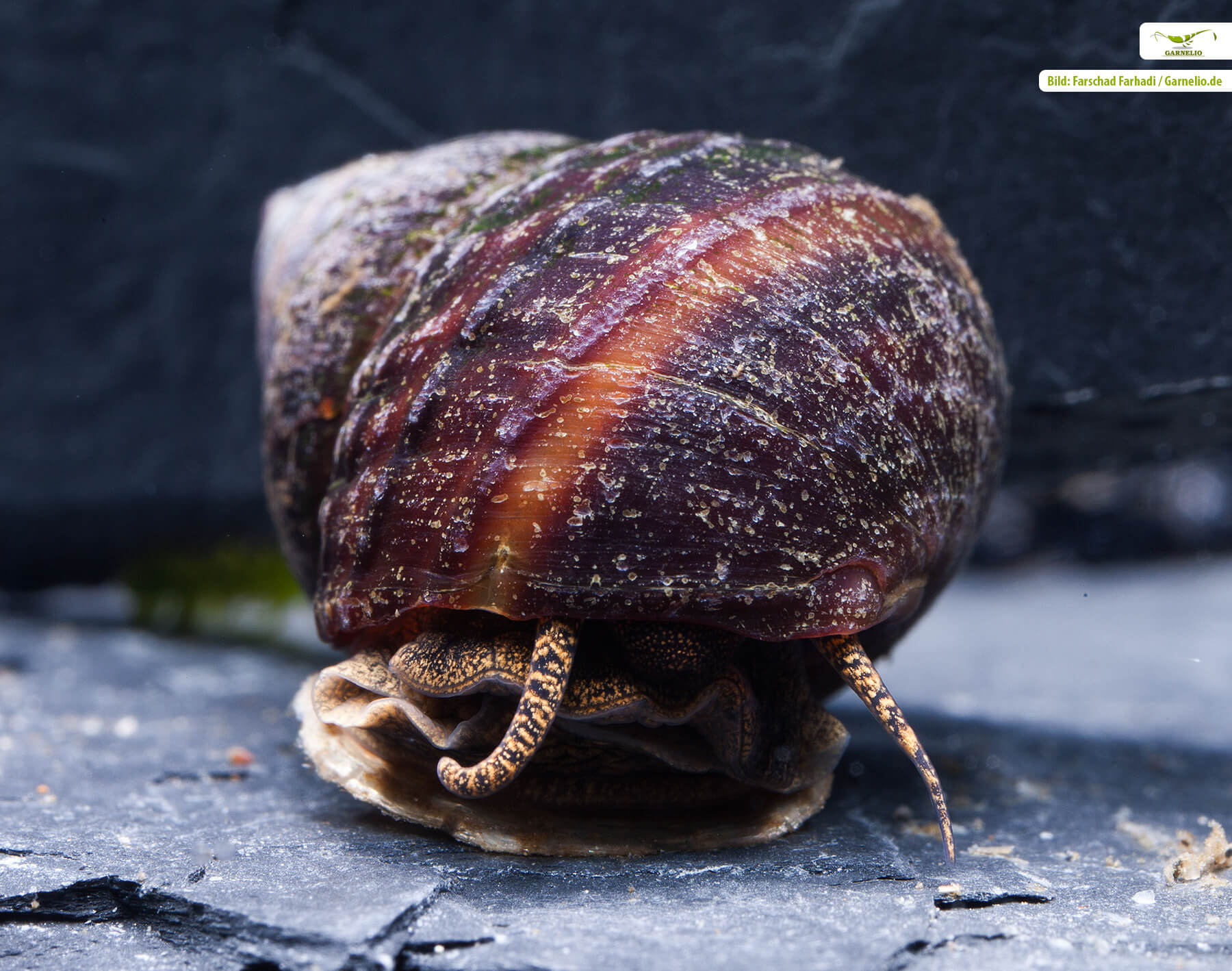
The lillane color form of the piano snail also likes to eat brush algae
Control - by competition
Once the brush algae and beard algae have been removed mechanically and the CO2 supply in the aquarium has been established or increased, the biomass removed by the algae removal should be replaced by fast-growing and rather small-leaved plants.
Prevention
As always, prevention is the best defense! Fast growing plants, adequate CO2 supply, good light, and adjusted fertilization will prevent nutrient gaps from occurring in the first place. Good, healthy growing plants are a serious competitor and do not leave many niches for algae.
Fo

